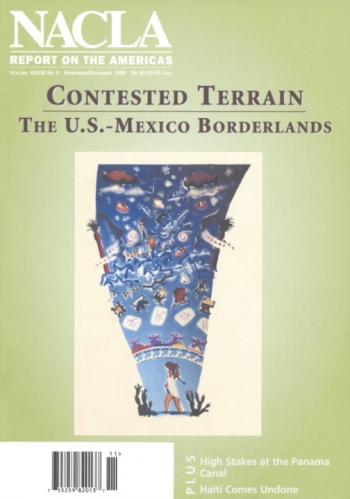Report
The escalating U.S. immigration-control campaign along the southwest border offers a striking contrast to the rhetoric and practice of U.S.-Mexican economic integration. The trend, it seems, is toward increasingly restrictive controls over unauthorized immigrant labor flows in the context of a general loosening of controls over cross-border economic activity.
The image of the "border crosser" dominates much of recent border studies and theory. As highlighted in works of such renowned writers as Gloria Anzaldúa, Héctor Calderón, Renato Rosaldo, D. Emily Hick and José David Saldívar, the border crosser is someone who is "at home" on the border, who comfortably straddles the two worlds in which he or she exists and who is therefore completely bilingual, and who celebrates international immigration.
Though research on the U.S.-Mexico border has a short history, the history of cultural studies of the border is even shorter. Despite its young age, border culture studies has emerged as a passionate field of study. In its short existence it has passed through at least five stages, which I would like to sketch here.
The majority of undocumented Mexican migrants enter the United States for the first time with the assistance of a paid guide known commonly as a coyote. Portrayed by the Border Patrol, human rights organizations and the press as hardened criminals, coyotes seldom get to tell their side of the story.
On a typical Saturday morning in the United States, millions of people will be relaxing at home, watching television or perhaps surfing the Internet on their personal computers. In Tijuana, Mexico, however, it is just another workday. In this city of over a million people, located in the state of Baja California across the border from San Diego, California, thousands of employees who hold jobs in facilities known as maquiladoras report to work six days a week.
By now, the murdered women of Ciudad Juárez are such an old story that the locals hardly pay attention anymore. The news remains fresh only to the victims' families, and to out-of-town journalists who still fly into the Texas city of El Paso to cover the carnage just across the international line.

